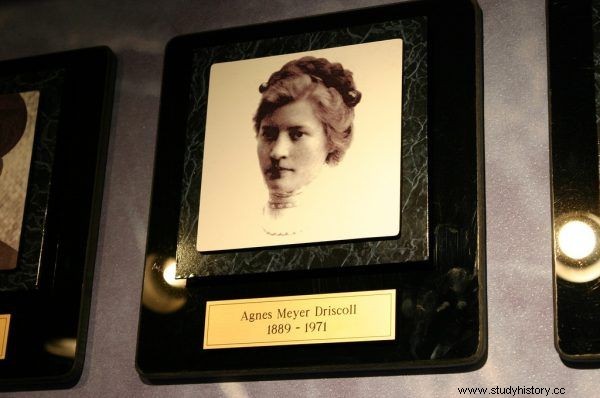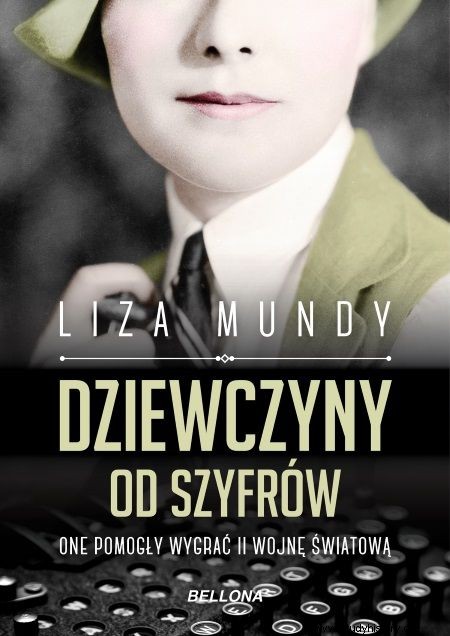You must have heard about the famous Enigma. But do you also know about its Japanese counterpart? Although the Americans broke its code, it did not save them from the worst. But the "purple" messages became for them one of the most valuable sources of secret information anyway.
Japan in the early twentieth century gained more and more importance in the seas. After winning the war with Russia, which ended in 1905, the country found itself among the world powers. When the empire joined the First World War on the side of the Entente, its position rose again significantly as a result of territorial acquisitions, among other things. Americans, whose interests clashed with Japanese in Asia, very quickly sensed a future competitor in this country.
A potential enemy had to be under surveillance as closely as possible. The first chance appeared in 1923. As Liza Mundy writes in her book "Cipher Girls" it was then in New York that naval intelligence officers stole the 1918 code book (the so-called "Red Book") from the Japanese consul's room and photographed each page. The materials fell into the hands of specialists. And finally:Agnes Meyer Driscoll's desk. An inconspicuous decryption expert who broke the first code, and then a few more that the Japanese used in the interwar period.
Successively, the "blue book" and the "Orange" encryption machine (M-1) were developed, and finally the advanced "A" encryption machine (called the "Red" machine). However, shortly before the war broke out, the Japanese were once again one step ahead of the Americans.
Their "B" cipher machine (codenamed "Purple" by American cryptologists) worked differently than the previous devices and was much more complicated. According to the military historian Władysław Kozaczuk, this rotor machine was based on the Enigma code, which the Japanese bought from the Germans and adapted to their needs. The first intercepted message encoded with the "Purple" machine came in March 1939 from the Japanese Embassy in Warsaw. And the Allies had no idea what it contained.

Photo by Agnes Meyer Driscoll taken at the US National Cryptologic Museum (photo:Ryan Somma, CC BY 2.0 license)
An unbreakable cryptographic wall?
The new device was top secret and only the most important embassies of the empire received it, incl. in Washington, Berlin, London, Paris, Moscow, Rome, Geneva, Brussels, Beijing and several other major cities. When they began to pass messages to each other with its help, the Americans collided with the wall. British cryptologists simply gave up very quickly, considering that the "Purple" cipher was simply unbreakable. When, after many months, in the fall of 1940, the Americans informed them that they had figured out the code, His Majesty's subjects were impressed.
Before the purple cipher was defeated, however, US cryptologists were increasingly frustrated at following the route of a man who installed new machines in embassies. How did they do it? When the Japanese specialist finished his job, they immediately found out about it, because they could no longer read information from a given facility. However, they were working intensively all the time. For months, they drew messages into diagrams. If the Japanese sent the same message with both ciphers (which happened), they compared them in detail, tried to look for patterns and similarities. They even had a small amount of deciphered letters at their disposal. It still did not lead to a breakthrough.
The decryption specialists had only hypotheses and no particulars. They would be stagnant for a long time, if not for another woman - and one of the characters in the book "Cipher Girls" . On September 20, their colleague, Genevieve Grotjan, entered the room where the group of cryptologists was sitting, announcing that she had something important to tell them.

She had been working for a long time figuring out codes. In college, she turned out to be a brilliant mathematician, but no university wanted to hire her at the mathematics department. Just because she wasn't a man. She ended up at a minor federal agency calculating railroad pensions. As she wrote a compulsory math test, her results caught the attention of a government official and she was invited to work with a cipher office. It was one of the best decisions the US military made! None other than Genevieve on September 20, 1940, broke the code for "Purple".
President Roosevelt and a handful of the most important people in the state were informed about the success of the cryptologists after a week of testing. After two weeks, a machine with the same parameters as the Japanese Enigma, built by American specialists, was already working in the cipher office. But it was not identical. Why? Its creators had no idea what the original looks like. The first copy of the original device (or rather its remains) was not obtained by the Americans until 1945 at the Japanese embassy in Berlin.
When the encryption machine started working, the American military was flooded with reports from Japanese diplomats, including Axis talks, and detailed reports on the German war effort and Hitler's plans from the ambassador to Berlin. As Liza Mundy explains in the book "Cipher Girls" :
For most of the war, it was the Japanese Purple Cipher Machine that provided the Allies with the best information about what was thought and said - as well as purchased, developed and produced - in Europe, especially in Germany. And all this is mainly thanks to General Baron Hiroshi Ōshima, who was the Japanese ambassador to the Great German Reich. Ōshima, a former military man and confidant of Adolf Hitler, had chats with the Führer on various topics. The Japanese ambassador admired the Nazis, visited various German sites, and wrote long, erudite and accurate reports to Tokyo.

The American-designed Purple machine (photo:Mark Pellegrini, license from CCA SA 2.5 G)
However, access to the most secret information exchanged by the Japanese did not protect the Americans from hitting the heart. It can even be said that the sheer volume of news has obscured the most important one. As Stephen Budiansky writes in his work devoted to the history of code breaking during World War II, on December 3, 1941, a purple code was sent to the Japanese embassy in Washington with a message instructing them to destroy the code books and one of the two working "Purple" encryption machines. When the analysts read this information, they immediately ran to the intelligence service with a warning. Even the president was informed on the night of December 6-7.
The Americans knew that Japan was getting ready to strike, but they did not know when, because ... the cipher used by the Imperial Navy at that time, which at that time was already moving towards the American shore, was still a mystery to them. On the morning of December 7, 1941, there was an attack on Pearl Harbor.
Meet the extraordinary fate of women breaking super ciphers:

